This is an after-action review of the Rangemaster Protective Pistolcraft Instructor Development Course held in White Hall, Arkansas. This 5-day class was taught by Tom Givens. This is a rundown of the class, the equipment I used, and my thoughts on it. Hopefully this will give you some idea what to expect if you’re planning on attending some Rangemaster training, and encourage you to if you’re not!
Full Disclosure: I paid full price for this class. No discounts, price-breaks, good-guy rates, free seats, or anything else. I also paid for my own travel, ammo, etc. This review was not coordinated with Tom Givens, Rangemaster, or any other entity. I told no one in the class that I have this blog, or that I intended to write a review (not that they would have cared). Point being, the thoughts here are mine and mine alone.
This article contains affiliate links.
Rangemaster Protective Pistolcraft Instructor Development Course
In April of this year I attended the Cognitive Conclave with Lee Weems, Erick Gelhaus, and John Hearne. The class was heavy with Gunsite and Rangemaster students. Both groups were excellent shots and had great camaraderie, so I made it a priority to get to both schools as soon as possible. Additionally, Tom Givens is literally a living legend, and a guy I want to learn from.
After the first day of the Cognitive Conclave I looked at the Rangemaster schedule and stumbled upon the Protective Pistolcraft class, in the right time frame and on the right side of the Mississippi. I asked Hearne about and he described it as, “a combination of basic and advanced instructor but with a ton of added value.”
According to the Eventbrite page the course includes modules on adult learning, effective coaching techniques, combat psychology, low light technology and shooting, plenty of live fire, and much more. I was in. The class was also a five-day “immersion”-type class. I greatly prefer the longer format, but these classes are few and far between, so I signed right up when I got home from the Cognitive Conclave.
I spent the next few month vacillating between eager anticipation…and considering dropping out due to the cost. The course cost, plus travel and hotel, are not inconsiderable. Obviously I went through with the class, and am greatly satisfied with having done so. I’d do it again in a heartbeat! Let’s get into it.
Venue(s)
The class was in White Hall, Arkansas, which is pretty much the geographical center of Nowhere. I thought I would get to do some bourbon hunting in and around Little Rock, but it was not to be (Little Rock was 30 miles away, and the liquor stores near me didn’t look like they catered to well-heeled bourbon aficionados, if you get my drift). Fortunately the venues for the class were outstanding.
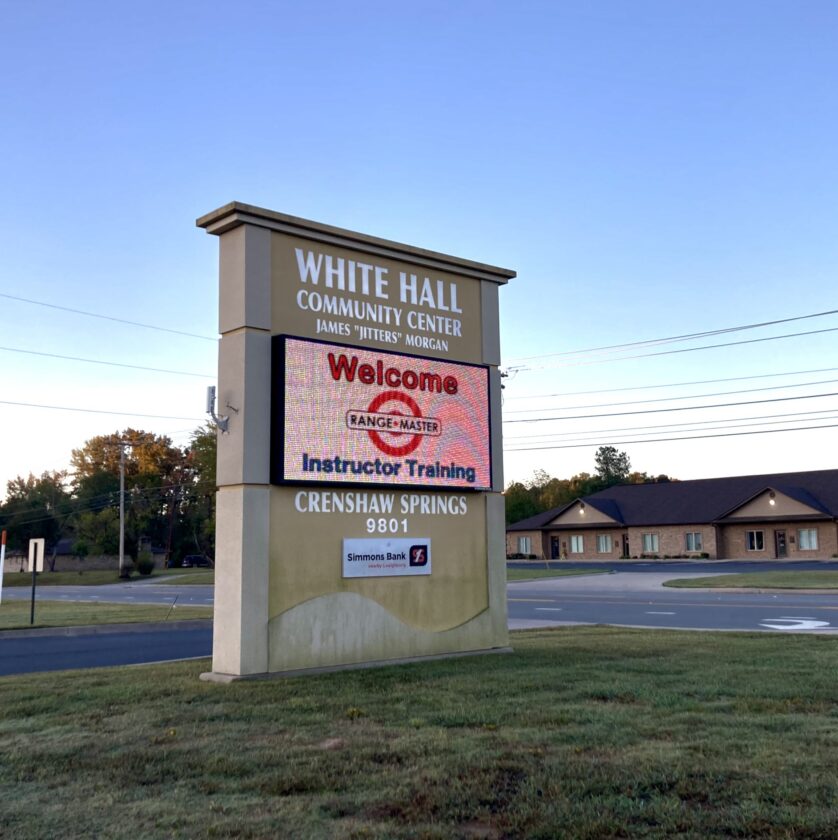
The classroom portion was held in The White Hall Community Center. Unlike the community centers of my childhood this wasn’t a long, narrow, dimly-lit, single-room building. This was an upscale building with multiple meeting rooms, a kitchen, and a gymnasium. The classroom was comfortable and well-appointed, and supported the training very well. A sincere “thank you” to the White Hall Community Center!
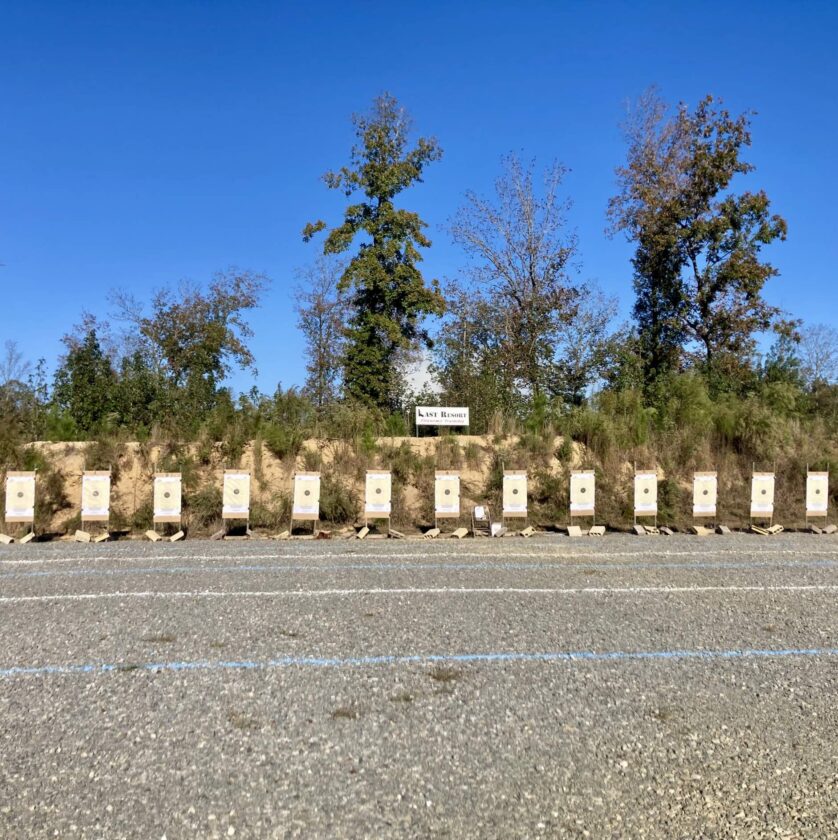
The range was held at Ed Monk‘s range, Last Resort Firearms Training. The range was excellent. It was well manicured and maintained, had clearly-marked yard lines, adequate spacing for two relays of twelve, and plenty of shade to utilize during breaks. Each day we had to transition from the classroom to the range, but the two were only separated by a 5-minute drive. With that out of the way, let’s get into what this class consisted of.
Rangemaster Protective Pistolcraft: Day One
The first training day was mostly spent in the classroom. There were a lot of basics to cover. After signing waivers and getting class/instructor intros, we did student intros. Each student had to stand up and state where he/she was from, occupation, experience, and goals for the class. After that we jumped into the heft academics portion, and there was a heavy academic load in this class.
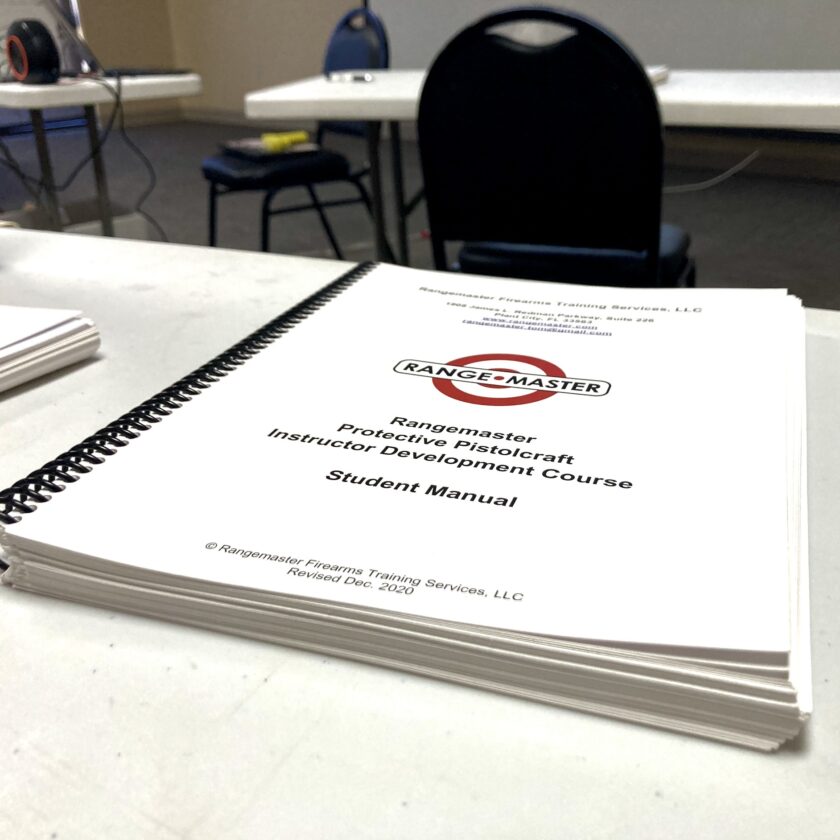
Tom Givens taught classes on safety and range etiquette, firearms types, human anatomy, and marksmanship. This is a fairly short list, but it took a long time to cover all this material. It was well into the afternoon when we finally made it out to the range. We began with dry practicing the draw stroke. Tom wanted to make sure everyone could draw safely and efficiently because above all, we have to be able to get the gun out of the holster!
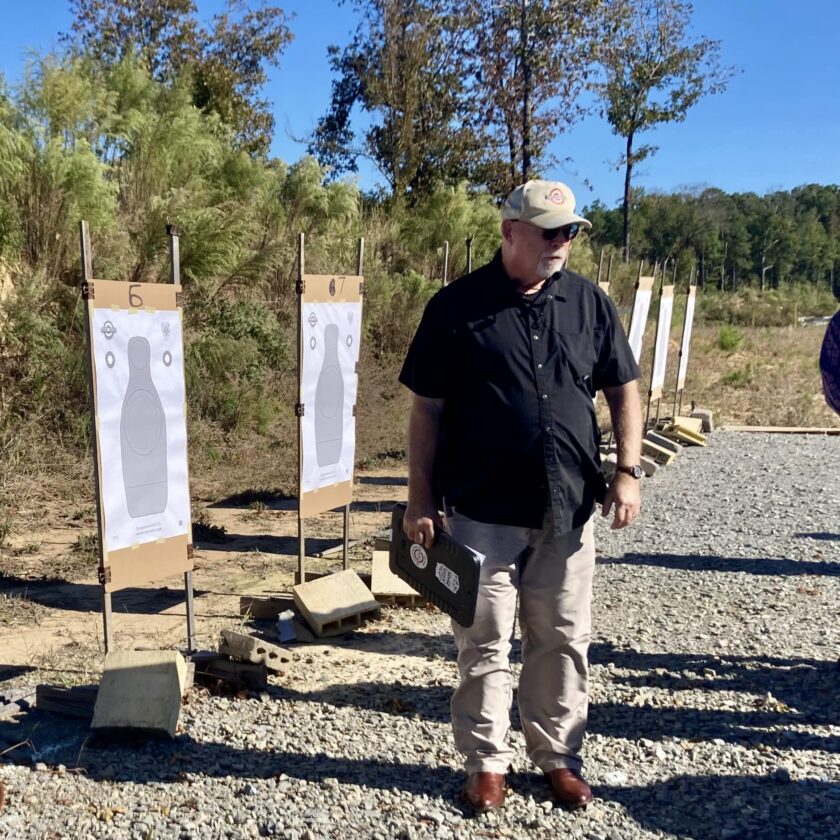
Then we stepped up onto the line. Day one mostly consisted of “basics”: drawing to the low ready, getting the gun back in the holster, firing single shots, multiple shots, and transitioning to smaller targets. My estimated round-count for Day 1 was 150 rounds.
Rangemaster Protective Pistolcraft: Day Two
Day two was heavier on range than classroom, but we did start the day in the classroom. The very first thing was the Dinkheller video. If you haven’t watched this video, seek it out and watch it; it is an absolutely heartbreaking example of a deputy who was failed miserably by his lack of training.
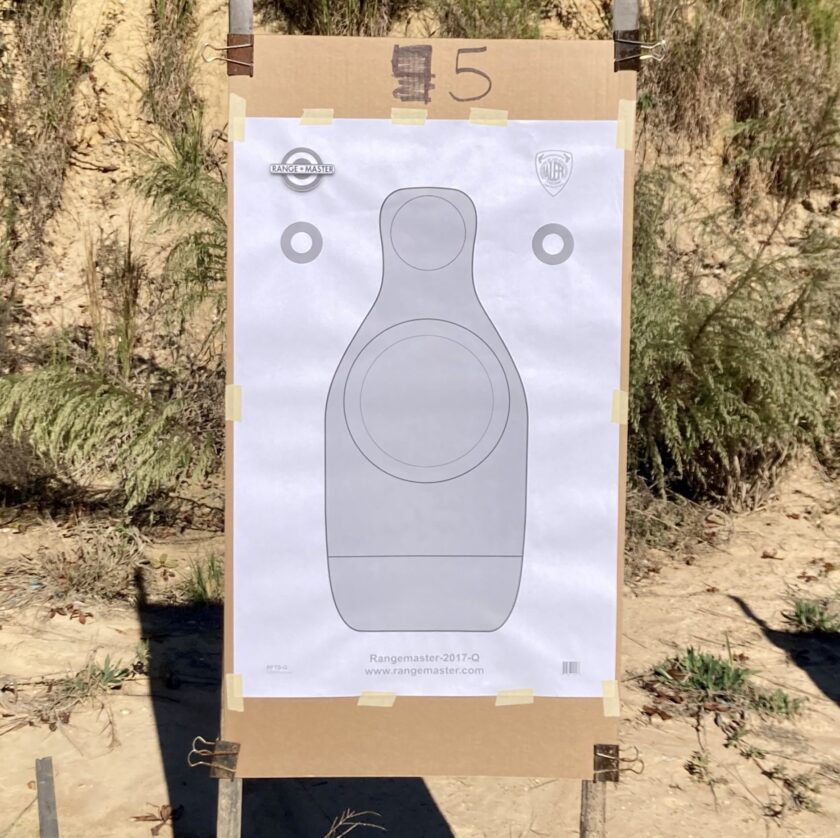
Next up was a class on the combative mindset, followed by a block on target design and selection. The target design block was exceptionally interesting to me. The factors that go into making a high-quality target are fascinating. The combination of anatomical relevance, appropriate “penalties” for shots outside of scoring areas, etc. The modern B-27 silhouette that cops qualify on is a good example of a bad target; it puts the shots in the belly of a human. The Rangemaster Q target is a great target with anatomically-relevant scoring zones.
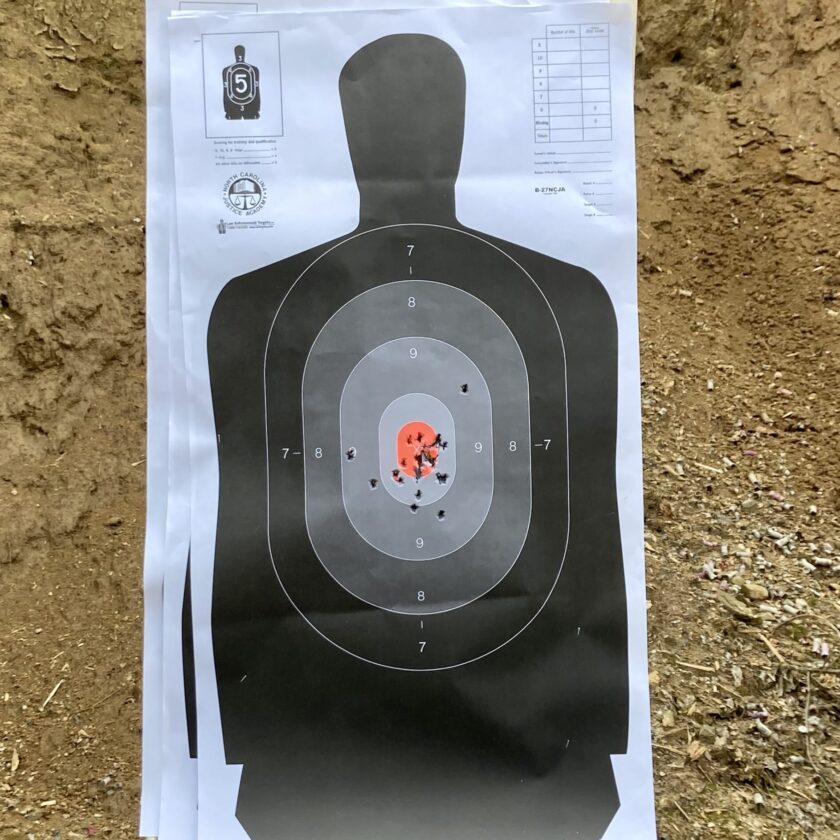
We hit the range for a pretty busy afternoon and started with cadence drills. We worked on cadence drills at varying distances and on targets of varying sizes. Next, we covered emergency reloads, the speed reload being used for most reloads in the course. After that we fired the bullseye course, the baseline skills assessment, and the Rangemaster firearms instructor qualification. Round count on day two: 400, 550 total.
Rangemaster Protective Pistolcraft: Day Three
Day three brought in some additional talent: Tiffany Johnson and Aqil Qadir from Citizens Safety Academy came in to teach a couple blocks. John Hearne also came in to teach a 4-hour version of his Who Wins, Who Loses, and Why.
First up was Tiffany with How to be an Assistant Instructor. I was very impressed by this module; I have been an instructor for a long time, yet I have never had a class on how to be an assistant instructor! Tiffany and Aqil did a great job teaching this and running a training lane to reinforce the relevant points.
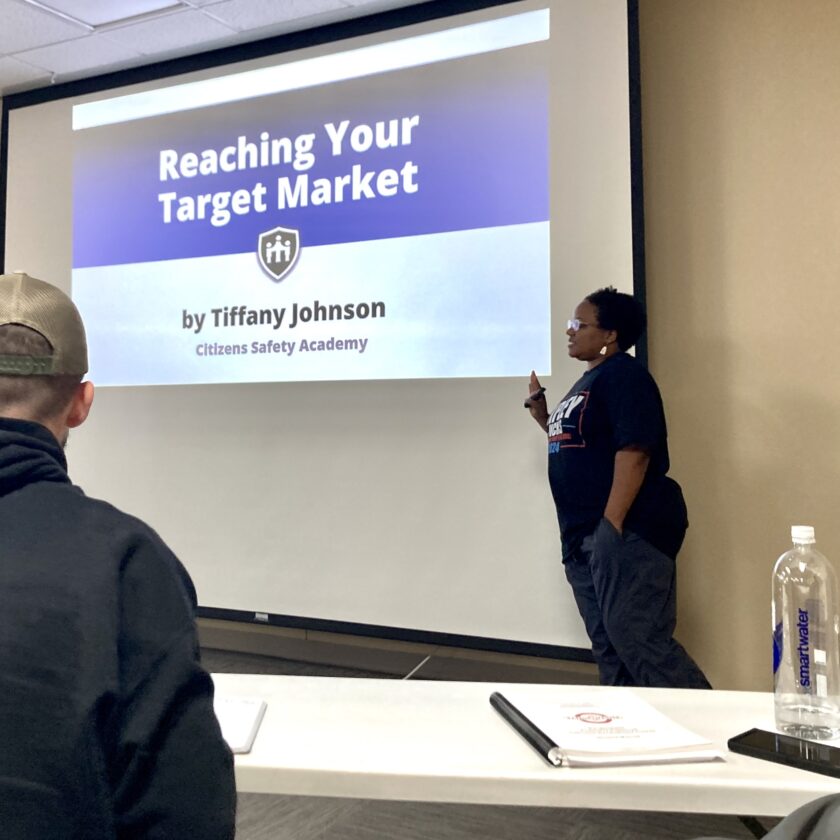
Next up was John Hearne. His lecture is phenomenally good, discussing both mental and physiological aspects of dominating in combat. Hearne also covers things you can do to improve your odds, and a quantifiable metric of how good a shooter you need to be. I’m not going to give you the answers…go to his class!
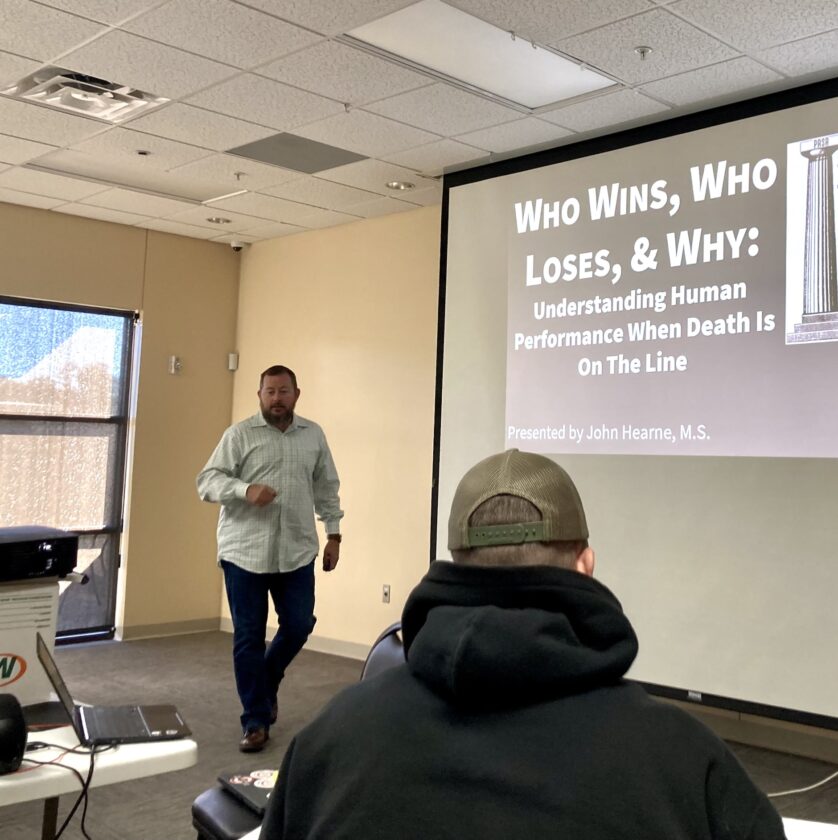
After Hearne’s lecture, Tiffany got back up and and taught Marketing Tips for Firearms Instructors. This was valuable information. I admit getting a little antsy; Tiffany was put in the unenviable position of lecturing right up on up until about 16:00. As soon as that wrapped up we hit the range.
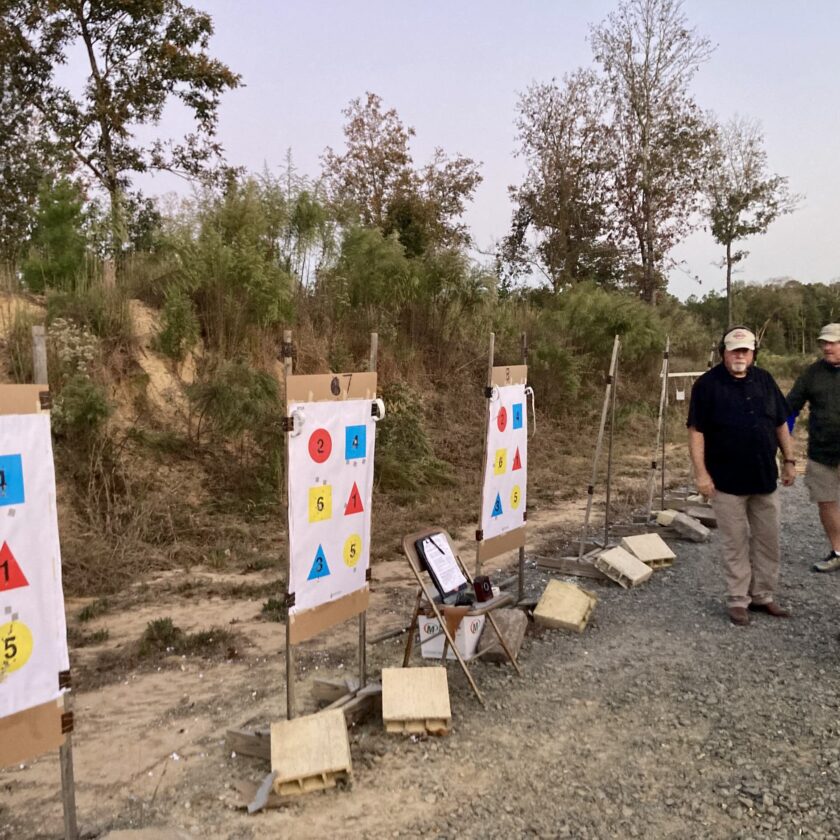
The range session was fairly short. We shot the bullseye drill, the baseline skills assessment, and the casino drill. There was some friendly competition here, and after shooting the casino once, we went one-by-one, for time and score. I pulled off a decent 19:45 but was nowhere close to first place (15:something). After a late evening on the range we were cut loose. Day three round count: 200 rounds, 750 total.
Rangemaster Protective Pistolcraft: Day Four
Day four began in the classroom. Classes taught covered instructor liability, low light technology and shooting techniques, and a brain power lecture that focused on combat mindset. This was incredibly good information. We hit the range after the classroom portion with the knowledge that this would be our last range session before qualifying.
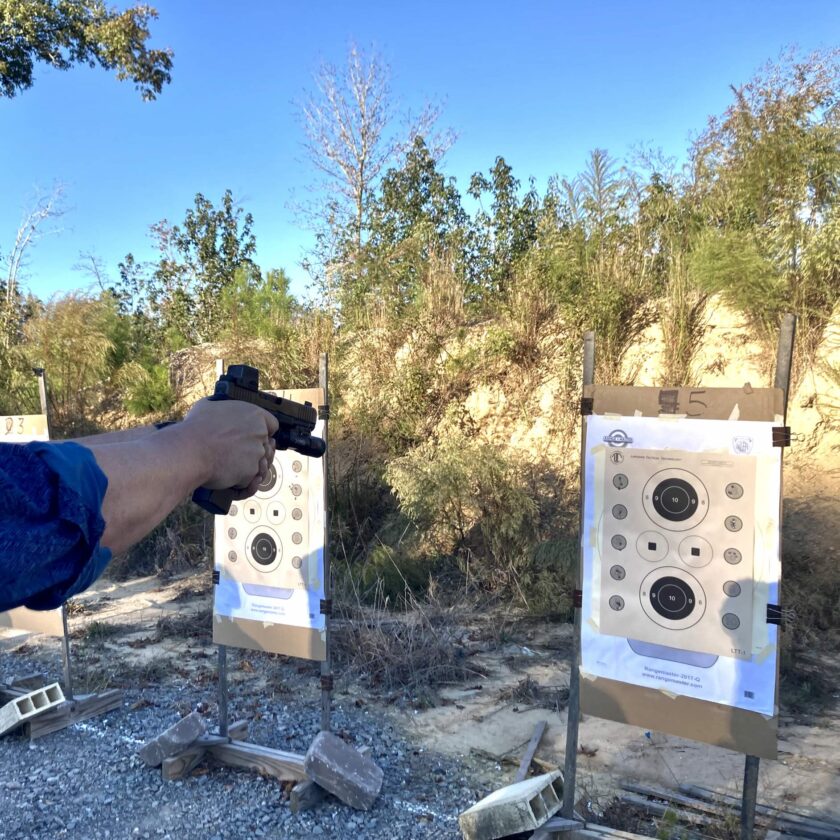
On this day we did some interesting stuff. We shot the LTT-1 target. This target, with its variously-sized dots and circles offers an incredible array of skills and drills in a single package. We also shot photorealistic targets. As we’d learned in Hearne’s lecture, this is pretty important from the standpoint of preparing to shoot another human. As John said, “if you have to shoot someone, they’ll have a face.”
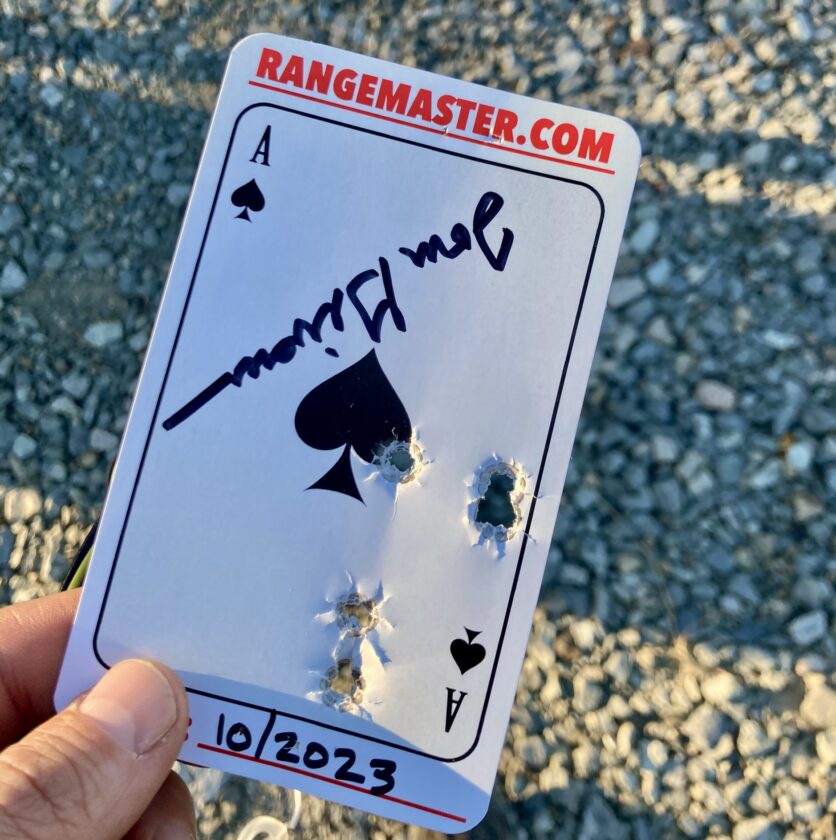
At the end of the drills we shot the “playing card drill.” This drill consists of 5 rounds, in 5 seconds, at 5 yards, on a large playing card (obviously Tom’s Rangemaster card). If you make all five hits within the time limit you keep the card, and Tom signs it. I was a “pass” at this station.
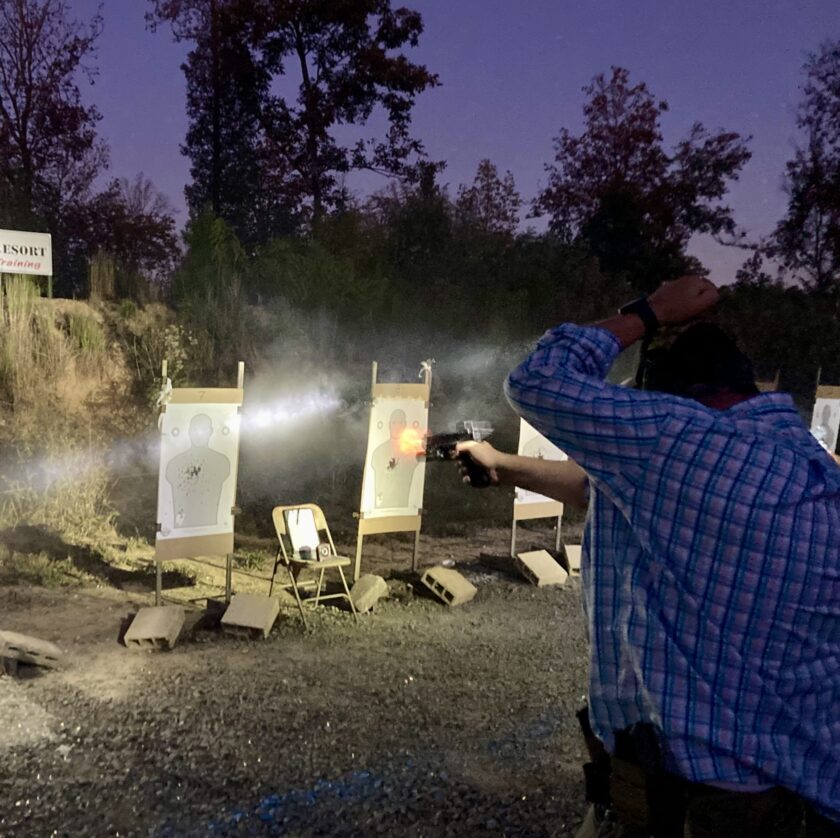
After the shooting ended for the day, we took a break before getting into the reduced light/flashlight work. Dinner was catered, then we go to work. There wasn’t a huge focus on night shooting or flashlight-aided fire due to its low likelihood of happening. It was covered well, though, and we did get an opportunity to do it, something few shooters ever work on. Round count: 250, total 1,000.
Rangemaster Protective Pistolcraft: Day Five
Day five: qual day! This was the only day we began on the range, then migrated to the classroom. We fired exactly 120 rounds: a 20-round warmup, and two iterations of the 50-shot Rangemaster PPIDC Qualification CoF.
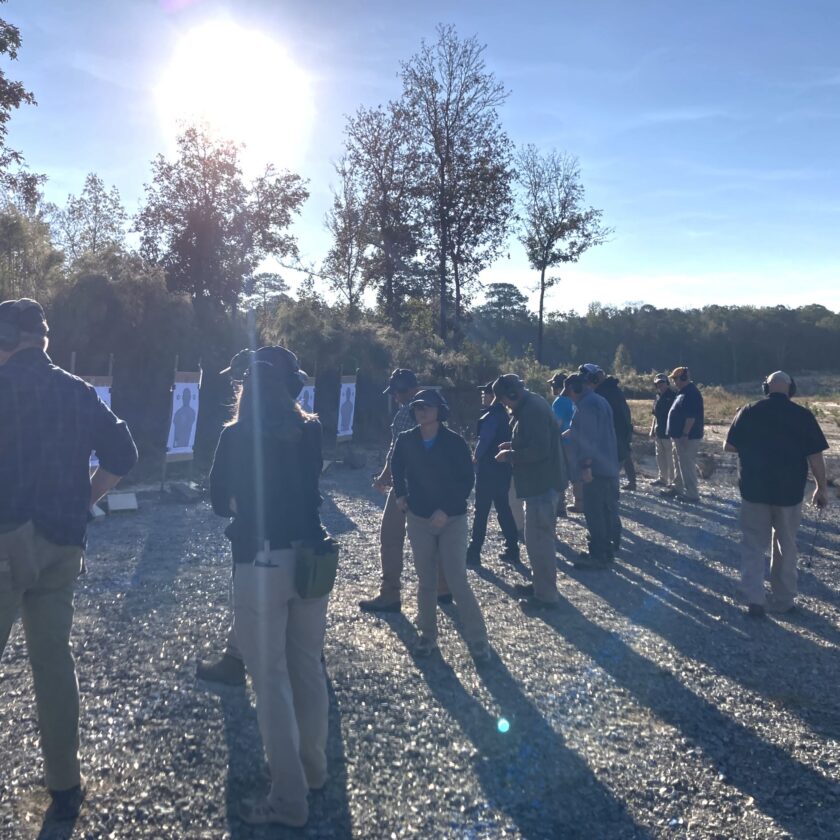
I am very happy to report that I shot 100% on both iterations of the qual. The first iteration felt good, but I was moving fast, finishing most strings with plenty of time to spare.
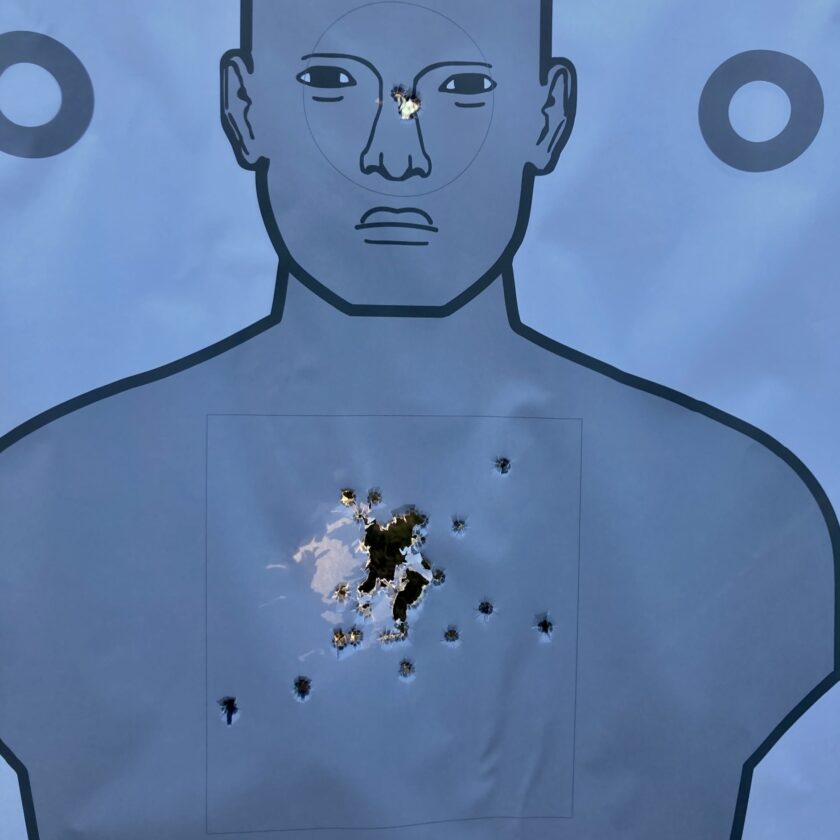
I settled down a little bit on the second iteration. I was able to use more of the allotted time for each string, and tighten my shot group up even further for a “100 +P.” After the shooting qualification, everyone breathed a sigh of relief.
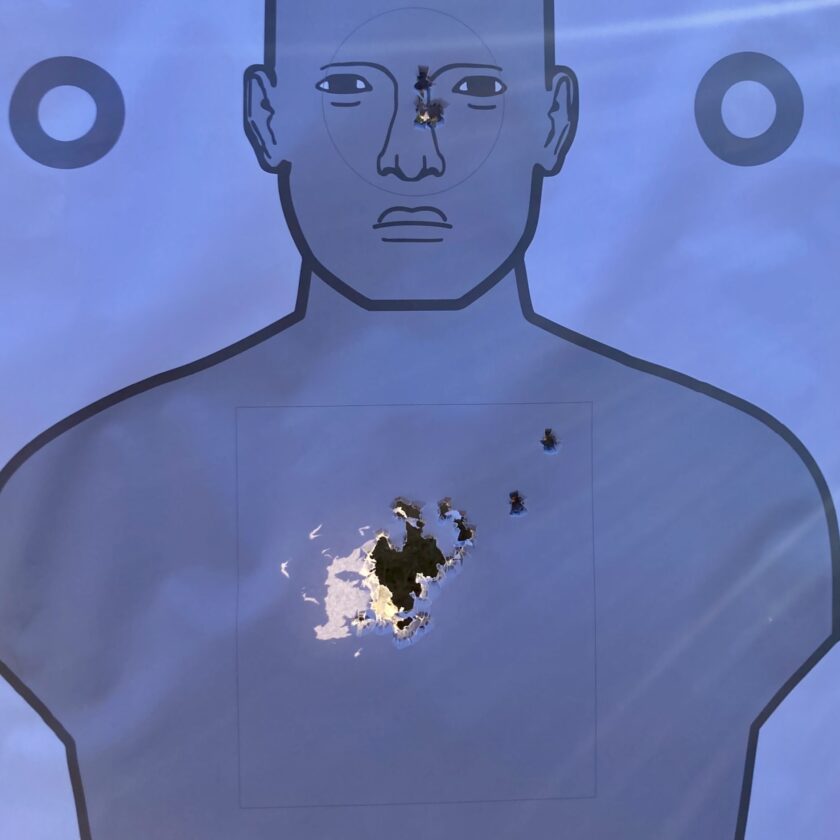
We headed back to the classroom…but not for an early day. This was a full day of training, with lecture going until around 16:00. We covered a couple of pretty big topics: adult learning modalities and a mindset class. I admit a feeling of anticlimax at having passed the qual, and then having to go sit in class for six hours.
Finally the lecture was done and it was time for the written test. I (and I think everyone else) had a little anxiety about the test. Passing the class requires passing both the shooting qualification with a 90% or better, and passing the written test with a 90% or better.
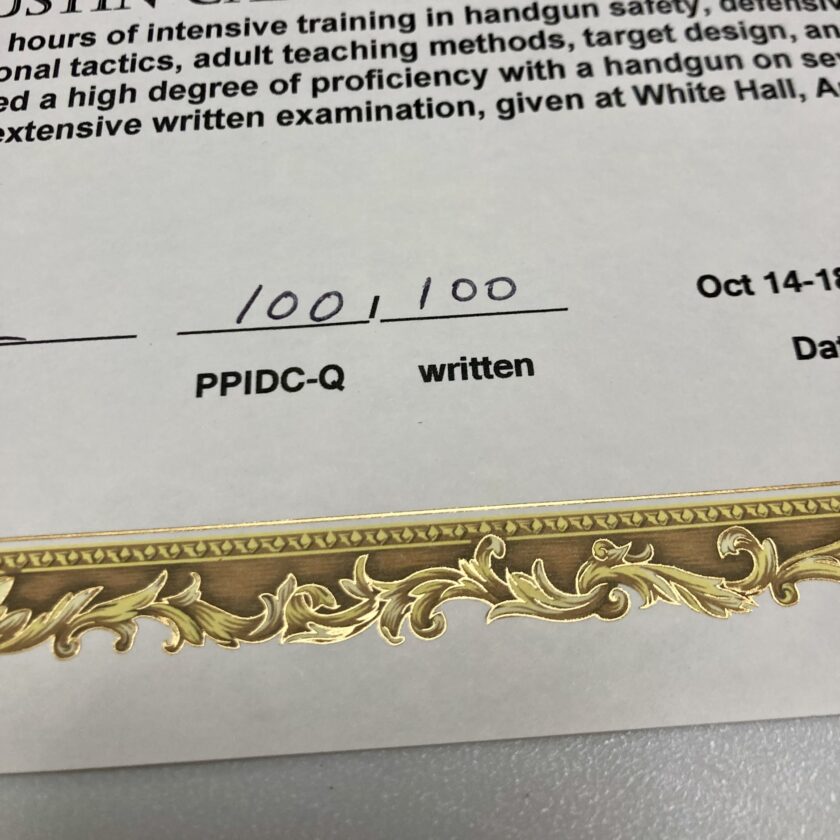
I shouldn’t have been worried. The class was well taught I spent considerable time reading my 250+ page student handout. Everyone passed, and everyone graduated as a Rangemaster-certified instructor. Tom said this class was above average as a class, and the Rangemaster Protective Pistolcraft generally has about an 85% pass rate. I was relieved that we all passed. Round count 120, 1,120 total.
Protective Pistolcraft: My Thoughts
That’s the nuts and bolts of the class, the administrative stuff. So what did I think about the class? In summary, the Rangemaster Protective Pistolcraft IDC was some of the best, most comprehensive handgun training I’ve ever received. Let’s talk about why.
Instructors/Staff
Having been a professional instructor (“professional” defined as “that’s how I made a very good living”), I am snobby about instructorship. I’ve written about it extensively. Tom Givens taught the vast majority of this class and his instruction was outstanding. Classes were relevant, professionally delivered, and obviously well-rehearsed. Tom had an answer for every question and a “why” for ever directive or recommendation.
John Hearne, Tiffany Johnson, and Aqil Qadir were likewise outstanding instructors. The assistant instructors were also extremely helpful. Ed Monk and Jim Shanahan were the AIs. Jim was on my end of the line and did an excellent job of coaching shooters (and student-coaches) as needed.
Applicability
This course was geared toward firearms instructors. Most of the class was dedicated to the firearms aspect: tactics, equipment, attitude/mindset, and marksmanship. Relatively little time was spent on instructor methodology, but these lessons were sprinkled throughout. Tom never missed an opportunity – in class or on the range – to point out ways to avoid potential pitfalls with students, or get maximum instructional value from a single target, drill, lesson, etc. The focus on instructorship was a soft focus, but it was there.
Time Management
The class was eerily smooth. Poor time management (aka wasted time) is a pet peeve of mine. I’ve written about so many bad examples that it’s refreshing to write about a near perfect example. There was no wasted time in this class, at all. There was no standing around, no wondering what was going on, no sidetracks or war-stores that ate up half an hour. No 10-minute breaks merged into 20 minute, open-ended breaks. There was zero wasted time.
This is an impressive feat and I sincerely appreciate it. I paid for five days of training. What I got was exactly that – five very full days of training I left class each day tired, ready to go to my room and relax/study a bit. This class packed six or seven days of an average instructor’s coursework into five days, and was absolutely worth the investment.
Range Management
Tom pulled off one of the neatest tricks I’ve ever seen on a range. Every time I would be thinking I was getting low on ammo, he’d fix it. If I knew I’d fired several drills from my magazine, Tom would mandate a speed reload. He also dictated that we come to the line with 4 magazines, plus a 25-30 rounds in our pockets. Each time my pockets were empty and I was shooting those last set of mags, he’d order us back to top off ammo. That kept the range running at a steady pace with minimal interruptions.
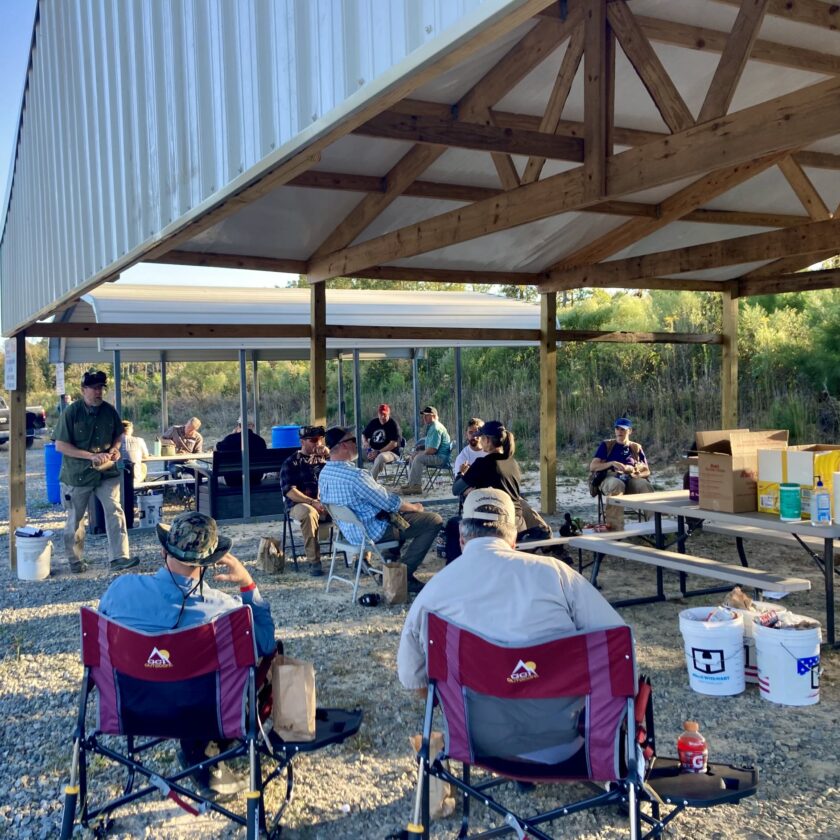
Students were put into two relays. There was also no standing around, getting bored for the non-snooting relay. When you were not shooting, you were coaching. This is where a huge part of the “instructor development” comes into the class. But that’s not all. Every time I began to think, “we’ve been in the sun for a minute,” he’d send us back to drink water and get in the shade for a little while. It’s rare to see a range run quite so smoothly and it was a very impressive thing to see.
Overall
I am incredibly lucky that my first formal handgun training was truly outstanding. It was military training from one of those rare groups that employs pistols exceptionally well. Unfortunately this is not the case for most shooters. The 5-day, Rangemaster Protective Pistolcraft class is the class I wish new shooters started with. This class covers it all: mindset, marksmanship and manipulations, support equipment, legality and liability, and plenty more.
Protective Pistolcraft is a phenomenally good class and I cannot recommend Protective Pistolcraft highly enough!
Equipment
Again, since folks on here like gear, I’ll talk gear. Let’s start with the gun.
The Gun: Sig P365XL
Regular readers will be surprised I didn’t run this class with my 1911. I shot this entire class with a Sig P365XL. This is for two reasons. First, my 1911 is in the shop for a scheduled tune-up. Second, this gave the the opportunity to learn a red-dot optic, and gain confidence in a second gun that serves as my primary backup.
My P365XL features an OEM peanut-butter-colored slide and OEM suppressor-height sights. This gun has been upgraded with a Wilson Combat grip module, but otherwise, it is entirely Sig. Frankly, I really like the WC grip and recommend it (and the tungsten weights) without hesitation. It fills the hand a bit more, both side-to-side and front-to-back, without making the gun appreciably bigger in the holster. It also has a slightly more open magazine well.
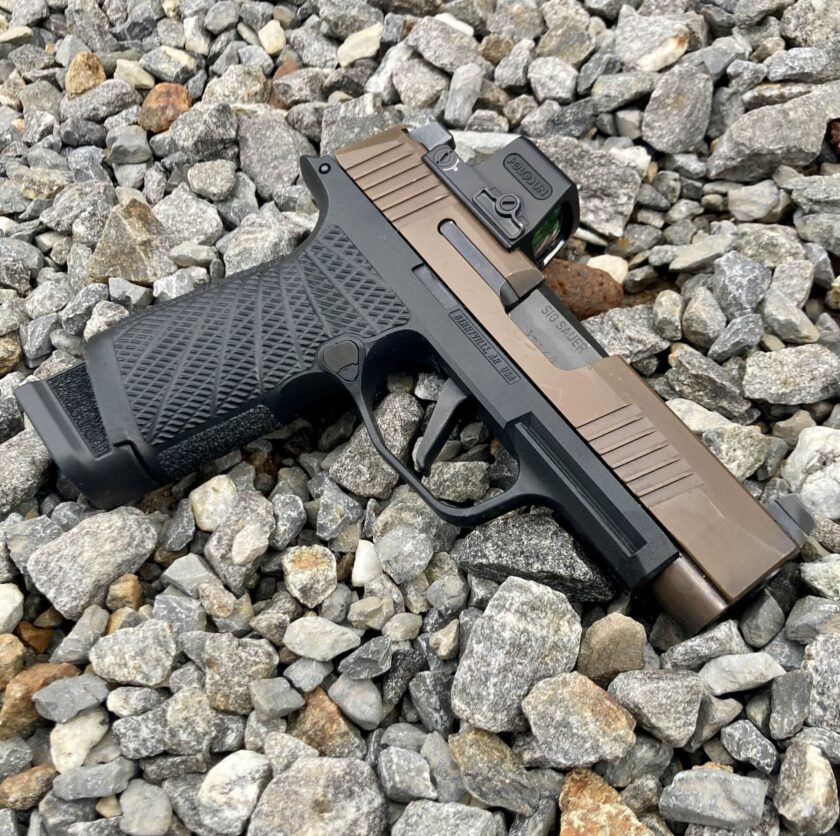
As I learned in the class, it also has incredibly aggressive texture on the front and backstraps. This is usually welcome, as it aids in acquiring a rock-solid grasp. The only downside is that in a 5-day, 1,100-round course, it also caused a blister to form in the palm of my hand. This was painful. Unfortunately I didn’t bring the Leukotape I learned about during the GoRuck event, but was able to deal with the blister with mokeskin.
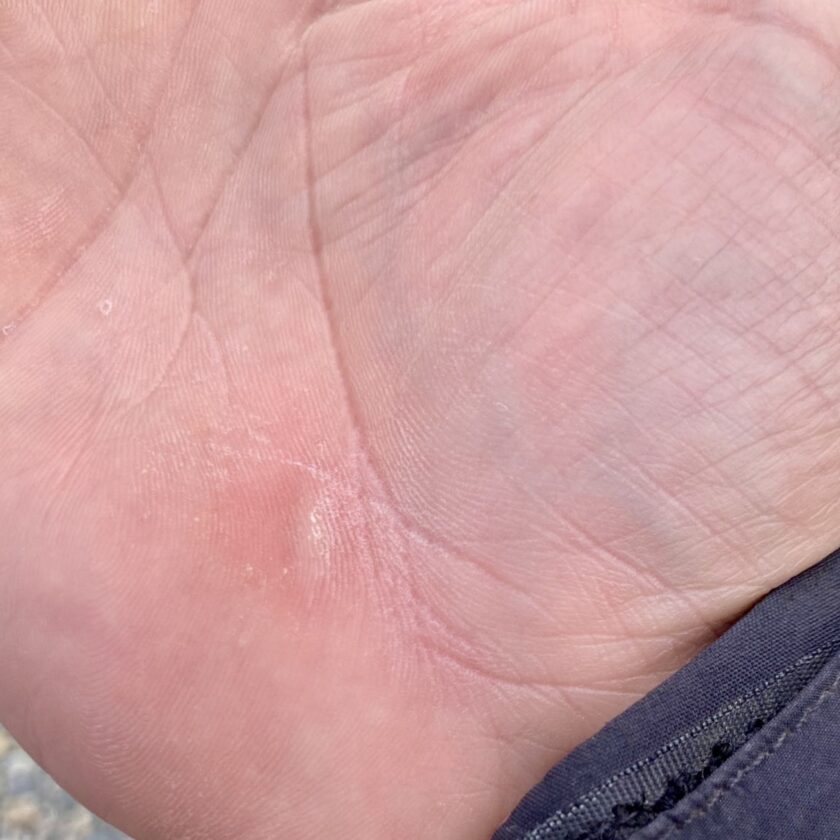
The additional size of the Wilson Combat grip module doesn’t interfere with real-world carryability. Since my Nighthawk 1911 has been in the shop, this has been my carry gun. I wore it all the way to White Hall (a 10-hour drive) and all the way home. And it shoots. Through a long, fairly high-round-count course it was reliable and exceptionally accurate.
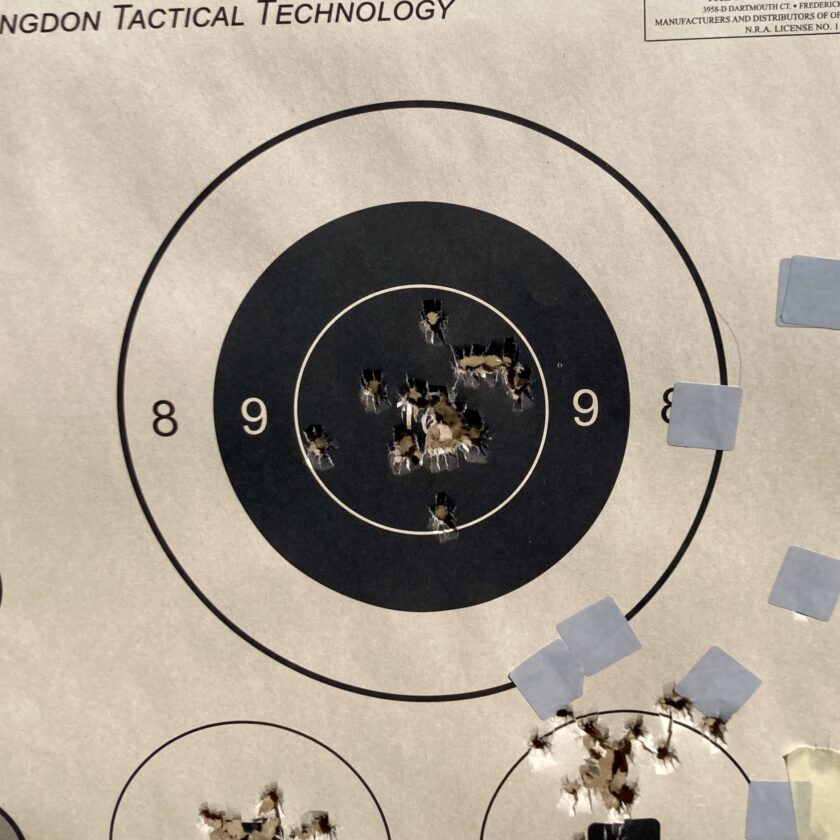
Most guns in the classes were Glock 17s and 19s, with a smattering of VP9s, Sigs, and Staccatos for good measure. As far as I know it was the only subcompact or micro-nine in the class. Don’t let anyone tell you you can’t shoot a small gun fast and accurately!
Support Gear
Support gear is fairly simple. I used a PHLster Pro Series holster. Every single time I drew was from concealment, from the AIWB position. I have absolutely zero complaints about this holster; it is comfortable, concealable, secure, and fast. In fact, if you told me you were in the market for an AIWB holster, this would be on my short list of recommendations.
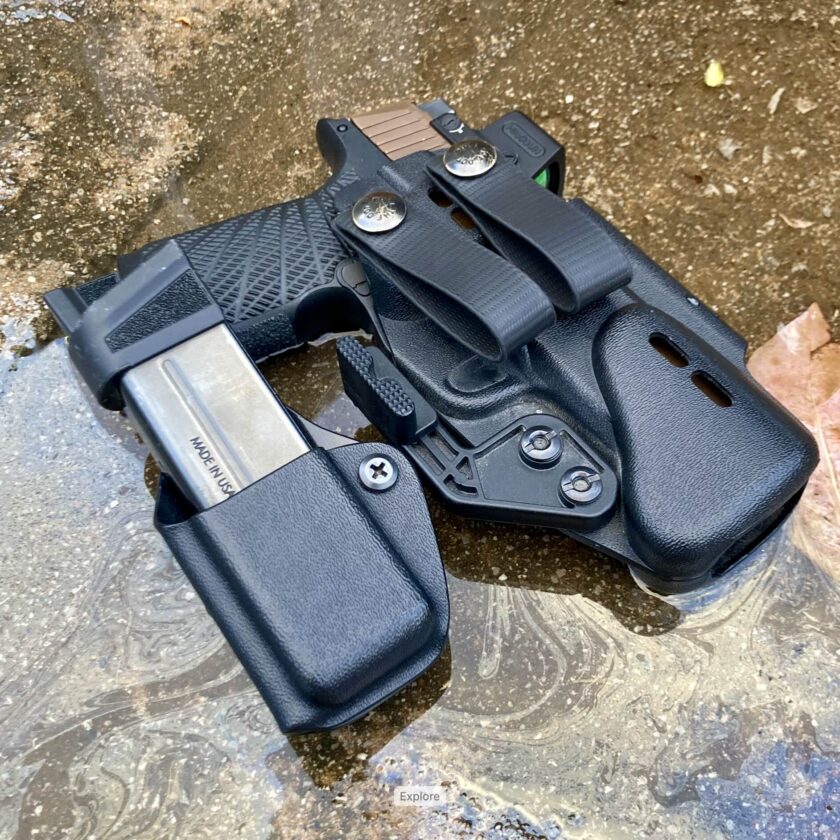
Magazine pouches were JM Custom Kydex Single Mag Pouch V3. Magazines were a variety of P365-series mags including 12-, 15-, and the Macro 17-rounders. The 17s are obviously my favorite, both because of the larger capacity and the more numerous witness holes which made loading a specific number of rounds easy. I will absolutely be buying more of these! Ammunition was S&B 124-grain FMJ and, as usual, functioned 100% reliably.
Sights
I chose to shoot this class with an optic. A few weeks ago I attended my local sheriff’s office’s Pistol-Mounted Optics class, along with some new deputies. This was my first formal training with a pistol-mounted optic, and it encouraged me to shoot a more challenging event, like Rangemaster Proctective Pistolcraft, without relying on the old standby: iron sights. The optic I chose was the closed-emitter, Holosun EPS Carry (6 MOA).
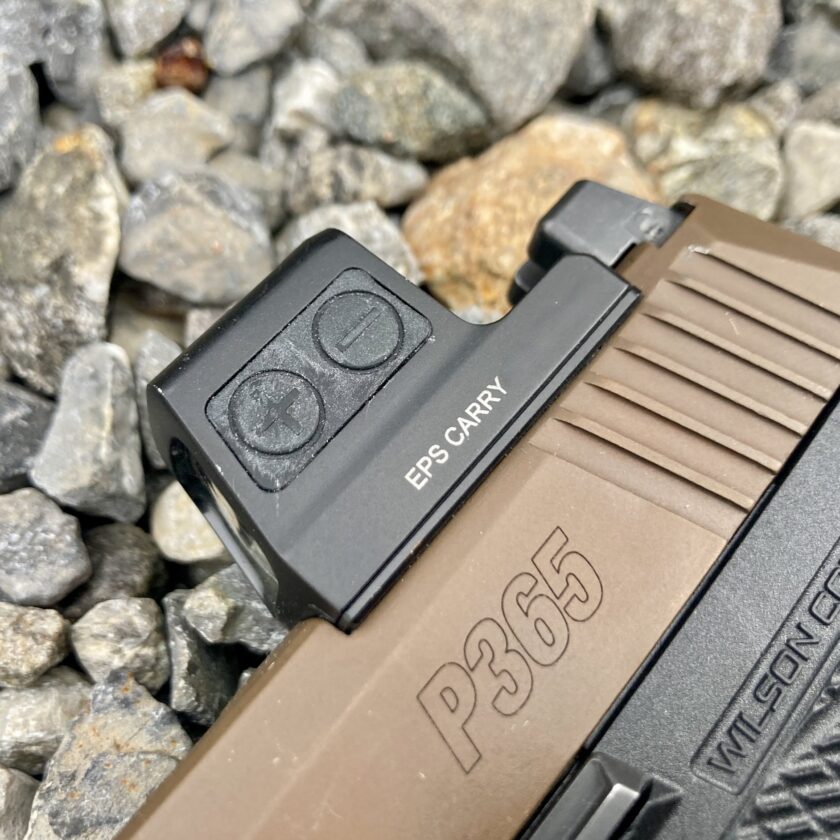
Still not fully trusting the dot, I made sure to have co-witnessed irons when I set this gun up. I get it, technology is moving forward, yada yada… but I have 20+ years of experience on irons. That’s a lot of institutional inertia to overcome. I upgraded the original Sig XRAY3 Day/Night sights to the exact same thing in the suppressor-height version. This allowed a lower-third co-witness. Unfortunately I had problems with both the optic and the iron sights.
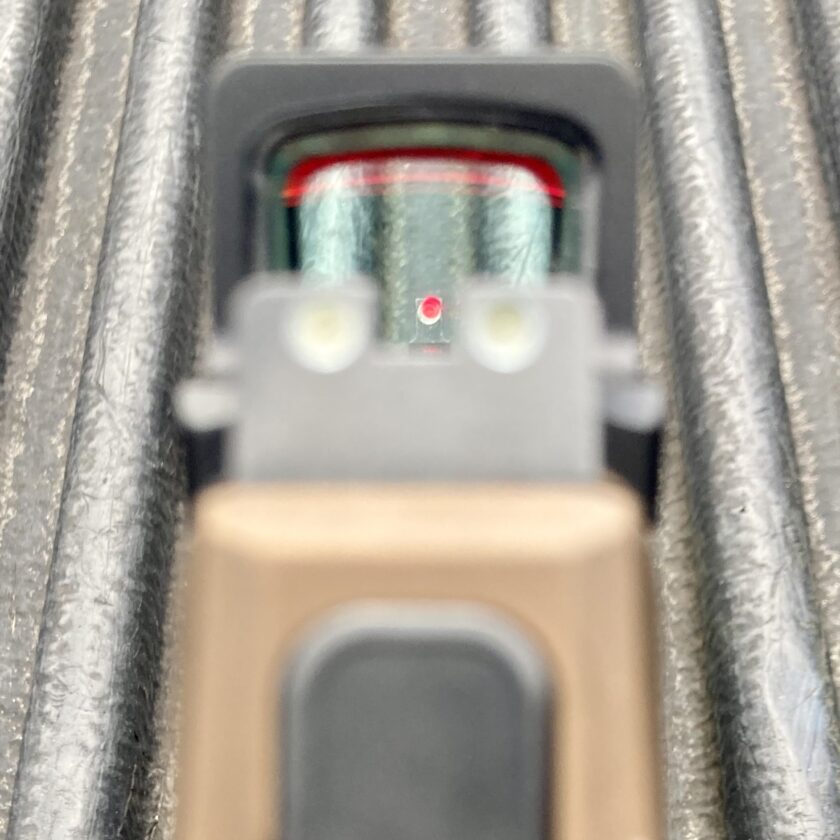
Sight Issues
The first issue occurred simultaneously with both the irons AND optic while shooting the Rangemaster Bullseye CoF. The first five rounds are fired at 25 yards. I had a tight, 4″ group…that was roughly 14″ to the left of center. For some reason my zero had shifted radically. No problem, I thought, I’ll just use my irons. I looked down at my irons sights and what did I see?
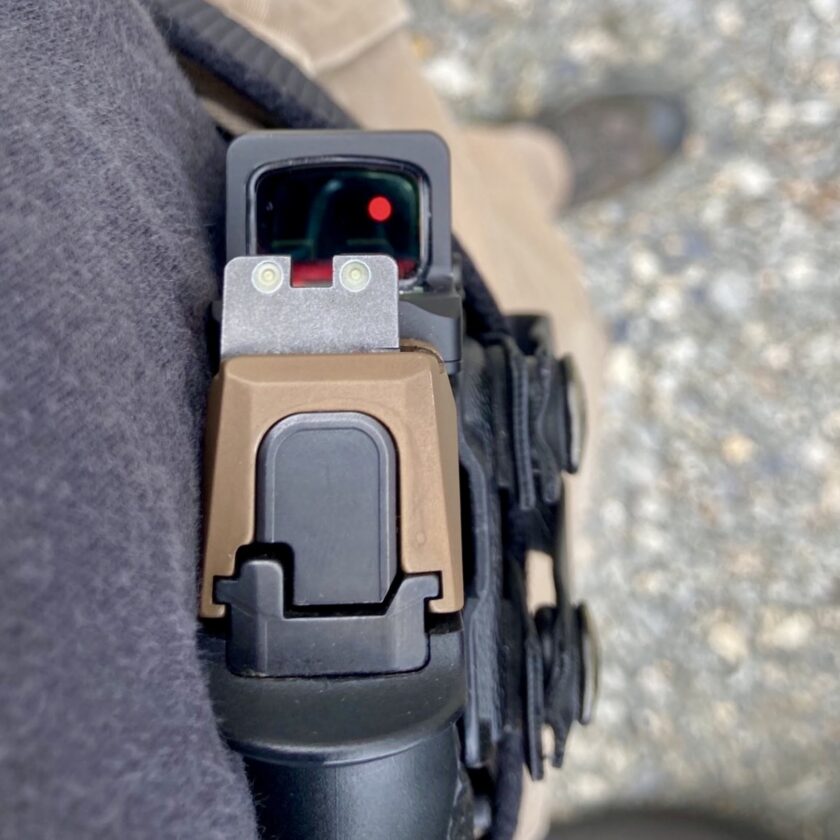
My rear sight was walking out of the slide; now I couldn’t count on my sights or my optic. Fortunately this was near the end of the second day. I was able to re-zero my optic before leaving the range, and drift my rear sight that night at the hotel.
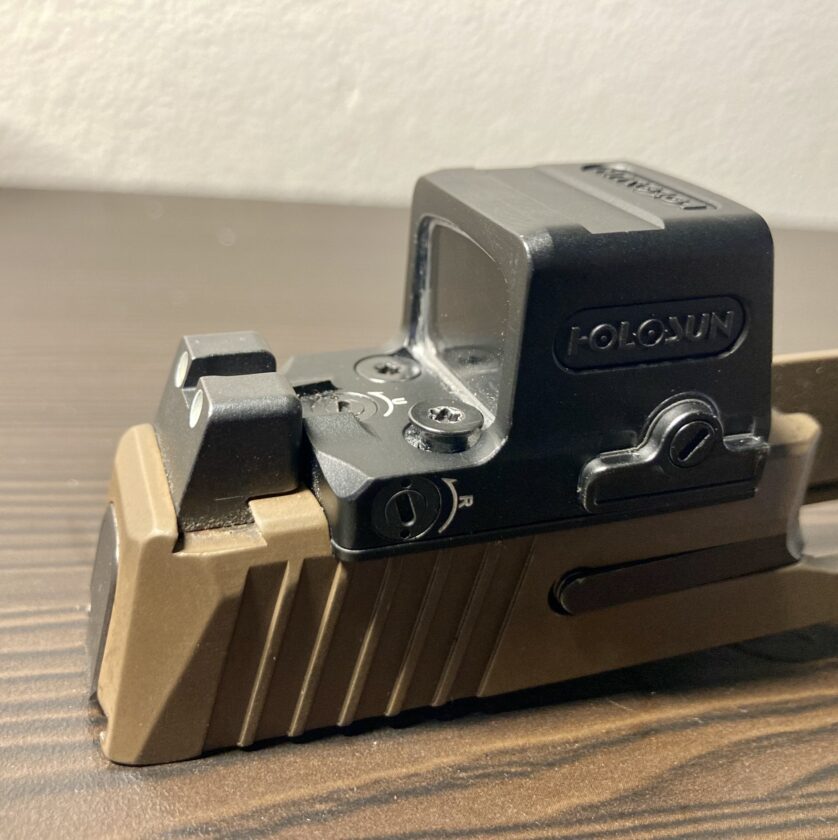
The second issue cropped up on the evening before the last day. The last day, you will recall, was qual day. I certainly didn’t want to go into the qualification with anything less than zeroed sights. I cleared my gun to clean it that night. As I sat my slide on the desk I noticed that one of the optic screws was coming out, despite having been Loctite’d in (YES, I did Loctite!). Fortunately this incident did not result in a shift in zero, though it did shake my confidence a bit. You will also notice that the rear sight was beginning to drift left again, too, so I corrected this, as well.
Conclusion
And that’s it! I really enjoyed Protective Pistolcraft. The longer, five-day format is costly in tuition, ammo, and travel. However, it does provide maximum bang for your buck and is ultimately cheaper than attending two separate two- or three-day events. For me, it was absolutely worth it and I highly recommend the class for anyone looking to improve either their pistol skill, or their firearms instructional ability. And for that matter, based on my experience I’d recommend any Rangemaster class. Get some training today.





